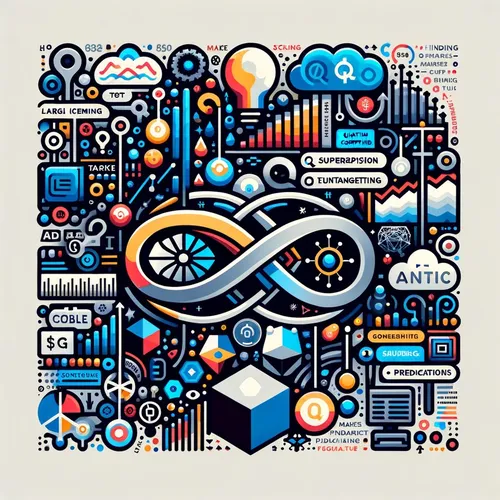Quantum Logistics: Optimizing Routes, Fleets, and Profits with Hybrid AI
- Author
- Quiet. Please
- Published
- Mon 11 Aug 2025
- Episode Link
- https://www.spreaker.com/episode/quantum-logistics-optimizing-routes-fleets-and-profits-with-hybrid-ai--67332062
This is your Quantum Market Watch podcast.
Markets woke up to a fresh superposition this morning: logistics stepped into the quantum spotlight. Q-CTRL launched new Black Opal “Quantum Applications” training focused on transport routing, showcasing how hybrid quantum-classical solvers can tackle real train scheduling—like their London Bridge Station case—with commercially relevant performance today[8]. For an industry that lives or dies by minutes and margins, that’s not theory; that’s timetables, trucks, and throughput.
I’m Leo—Learning Enhanced Operator—and I’m standing in a lab where dilution refrigerators hum like distant thunderstorms. Inside, qubits shiver near absolute zero, each a coin that never quite lands—superposition harnessed for optimization. The logistics announcement matters because routing, packing, and fleet assignment map naturally onto Ising models and QUBO formulations. Hybrid workflows use classical heuristics to frame the problem and quantum subroutines to explore rugged search landscapes faster, or at least smarter, than brute force. That’s the quiet revolution: not magic speedups everywhere, but better answers where complexity bites hardest.
Zoom out, and you can feel the industry alignment. Deloitte just outlined four plausible quantum futures and argued that early movers in 2025 seize scarce talent, vendor access, and IP advantage—especially as we push toward hundreds of reliable logical qubits over the next five to seven years[4]. Logistics players who start now don’t just learn; they lock in capacity and shape roadmaps. Meanwhile, Japan is mobilizing industrial components: Hamamatsu Photonics is funded by NEDO to build ultra-high-speed, ultra-sensitive cameras and spatial light modulators for neutral-atom, photonic, and trapped-ion systems—exactly the optics stack that stabilizes large-scale quantum processors[6]. Hardware maturity and application know‑how are converging on the loading dock.
In practical terms, a rail operator might use a variational quantum algorithm to minimize late penalties across a day’s schedule with thousands of constraints. The experiment looks like this: you encode trains-as-spins, conflicts as couplers, penalties as fields. You sweep control pulses—calibrated with error mitigation—to sculpt the system’s energy landscape. When the cryostat exhales and the readout flickers—photons whispering outcomes—you’re collecting samples from low-energy configurations that represent feasible timetables. It’s messy, iterative, and very human: engineers tune ansatz depth like mechanics tune engines, guided by loss curves and latency budgets.
Finance and policy are paying attention. IonQ, a bellwether for trapped-ion progress, just briefed investors around its Q2 cadence, underscoring partnerships across cloud and pharma that will matter as logistics seeks capacity on real machines[3]. And yes, market analysts and vendors see momentum: training, toolchains, and hybrid solutions are proliferating, with BFSI and supply chains among early value pools[2][8]. Even SAS reports boardrooms funding quantum AI for risk, diagnostics, and disaster response—adjacent use cases that rhyme with logistics under pressure[9].
So what’s next for logistics? Expect quantum to start in the seams: crew rostering, yard optimization, dynamic rerouting under disruptions. Early wins will look like percentage-point improvements multiplied across fleets—compounded alpha in the language of supply chains.
This is Quantum Market Watch. I’m Leo, Learning Enhanced Operator. Thanks for listening, and if you have questions or topics you want on air, email me at [email protected]. Don’t forget to subscribe to Quantum Market Watch. This has been a Quiet Please Production—visit quiet please dot AI for more information.
For more
